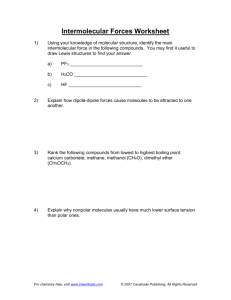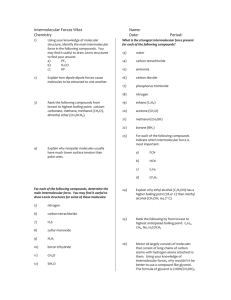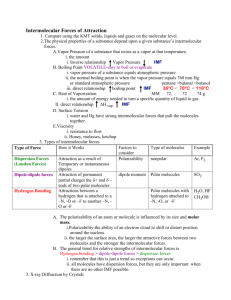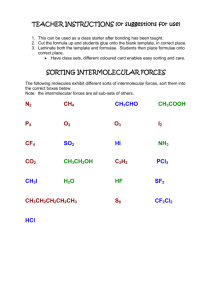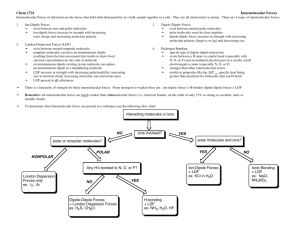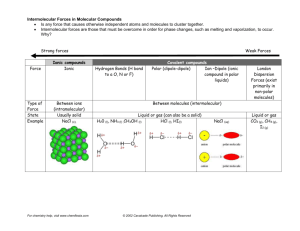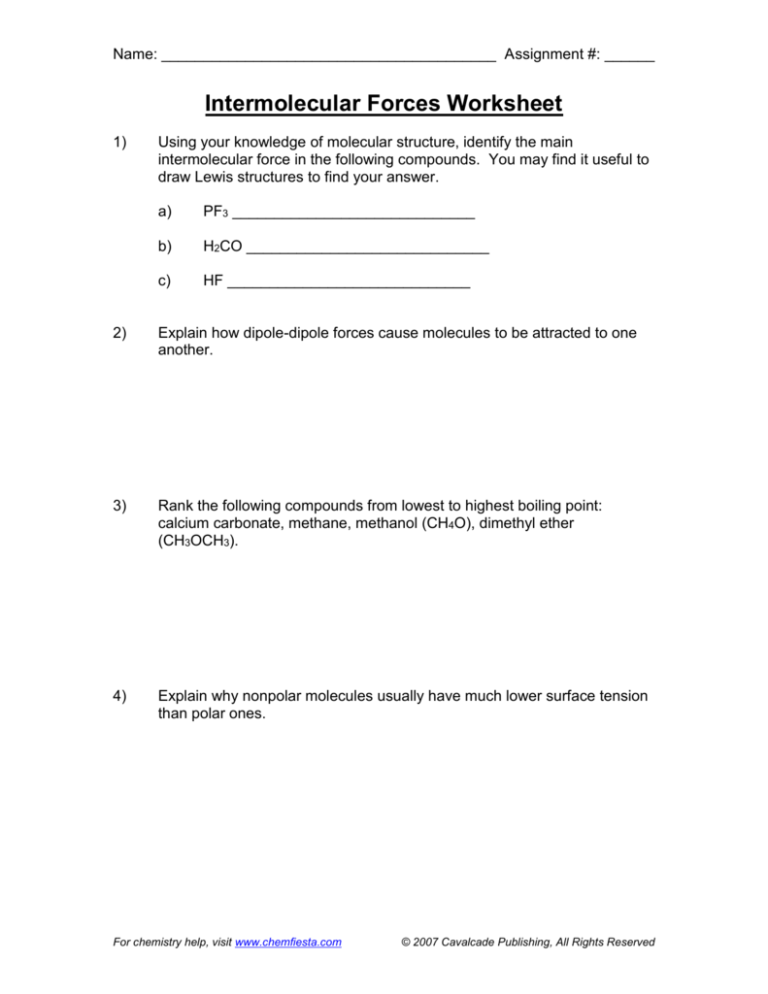
Name: ________________________________________ Assignment #: ______
Intermolecular Forces Worksheet
1)
Using your knowledge of molecular structure, identify the main
intermolecular force in the following compounds. You may find it useful to
draw Lewis structures to find your answer.
a)
PF3 _____________________________
b)
H2CO _____________________________
c)
HF _____________________________
2)
Explain how dipole-dipole forces cause molecules to be attracted to one
another.
3)
Rank the following compounds from lowest to highest boiling point:
calcium carbonate, methane, methanol (CH4O), dimethyl ether
(CH3OCH3).
4)
Explain why nonpolar molecules usually have much lower surface tension
than polar ones.
For chemistry help, visit www.chemfiesta.com
© 2007 Cavalcade Publishing, All Rights Reserved
Name: ________________________________________ Assignment #: ______
Intermolecular Forces Worksheet Answers
1)
Using your knowledge of molecular structure, identify the main
intermolecular force in the following compounds. You may find it useful to
draw Lewis structures to find your answer.
a)
PF3
dipole-dipole force
b)
H2CO
dipole-dipole force
c)
HF
hydrogen bonding
2)
Explain how dipole-dipole forces cause molecules to be attracted to one
another.
Polar molecules have partially positive and partially negative sides
(which correspond to the side of the molecule which is more or less
electronegative). Because opposite charges attract one another,
these molecules stick electrostatically.
3)
Rank the following compounds from lowest to highest boiling point:
calcium carbonate, methane, methanol (CH4O), dimethyl ether
(CH3OCH3).
By using intermolecular forces, we can tell that these compounds
will rank:
methane (Van der Waals forces), dimethyl ether (dipole-dipole
forces), methanol (hydrogen bonding), calcium carbonate (ionic
electrostatic forces that are much stronger than intermolecular
forces).
4)
Explain why nonpolar molecules usually have much lower surface tension
than polar ones.
Because the molecules aren’t attracted to each other as much as in
polar molecules, these molecules are much less likely to have high
surface tension.
For chemistry help, visit www.chemfiesta.com
© 2007 Cavalcade Publishing, All Rights Reserved

